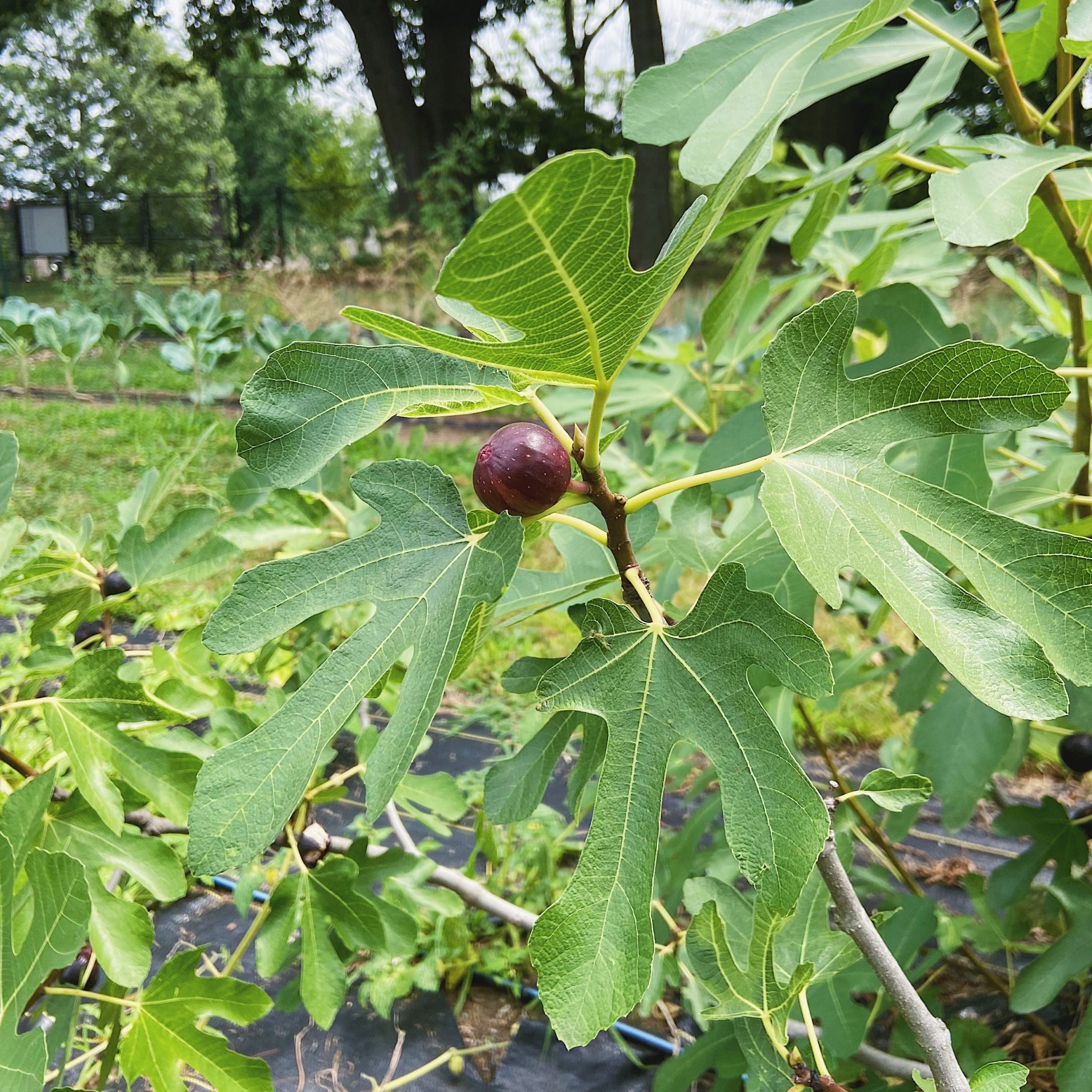September is always an exciting month for orchard harvests, with many of our favorite fruits ripening including figs, paw paws, Asian pears, almonds and more! Please check out our POP Monthly Orchard Task List for recommended maintenance activities to complete this month (the Sept/Oct list is also attached below).
Here is some more detail on some of the key tasks for September:
Orchard Watering
New plantings (from this spring or last fall) should be watered thoroughly once per week until they drop leaves and go dormant. In most years in our wet climate, established orchard plantings don’t require much in the way of supplemental watering except in the case of extended drought conditions.
Summer/Fall Weeding
Although weed growth will soon slow down with the onset of cooler weather and shorter days, many weeds are still growing rapidly and setting seed. Weeding at least once a month is advisable for orchards and food forests throughout the summer and early fall! POP’s weed identification guide is available for sale on our website and we always have free copies to distribute to community orchard partners. Check out POP’s guide to Ramial Wood Chips and Weeding in Place.
Emergency Pruning
As summer comes to an end, it becomes increasingly important to limit pruning to emergency pruning only. Fall pruning can result in new growth that doesn’t have time to harden off before winter temperatures hit. Keep an eye out for any diseased, damaged, or dead wood that should be pruned away no matter the season.

Remember: use sharp, rust-free hand tools and sanitize between every cut for disease prone trees during the growing season. For easy disinfecting, we recommend carrying a spray bottle with you of rubbing (isopropyl 70%) alcohol or a bleach solution (1 part bleach: 10 parts water) to wipe down tools.
Pest and Disease Monitoring & Identification
Many orchard pests and diseases are active throughout the summer months and into the fall. It is important to continue weekly monitoring of your plants to identify and manage challenges. Some of the most common insect pests to contend with in September include:
Plum Curculio
Codling Moth
Tree Borers
Spotted Lanternfly
Apple Maggot

Observe your orchard regularly throughout the year for pest and disease problems, identify and respond appropriately. We’ve been distributing physical copies to community partners, but you can also check out POP’s Scouting Guides for pest and disease management available for download on our website:
https://www.phillyorchards.org/?s=scouting+guide&post_type=resource
These guides are intended to help properly identify the insect pests and diseases that affect the following common fruit trees:
Apples
Peaches
Cherries
Plums (& Apricots)
Pears & Asian Pears
The guides include lots of photos and a description of how to identify the particular pest or disease and the damage caused by it. Proper identification is essential to treating these problems, as each has its own unique options for management! Once you have identified a pest or disease, you can then consult our website for management recommendations by using our search function:
https://www.phillyorchards.org/search/
Remove Damaged and Dropped Fruit
For fall fruits, it is advisable to continue to monitor your developing crops for insect and disease damage and remove the affected fruit. Similarly, it is best to gather any fallen fruit to avoid the further spread of pest and disease challenges. All fruit should be disposed of by adding to a hot compost system, feeding to poultry, or bagging up to remove from the site.
September Harvests!

Look out for ripening pears, paw paws, figs, Asian pears, apples, grapes, everbearing raspberries, everbearing strawberries, almonds, hazelnuts, cornelian cherries, jujubes, chokeberries, maypops, rose hips, perennial herbs and greens, and more! Record your harvests using our handy POP Harvest Tracking Sheet.
Enjoy the September harvests and cooler weather!
SUPPORT US! If you found this entry useful, informative, or inspiring, please consider a donation of any size to help POP in planting and supporting community orchards in Philadelphia: phillyorchards.org/donate.